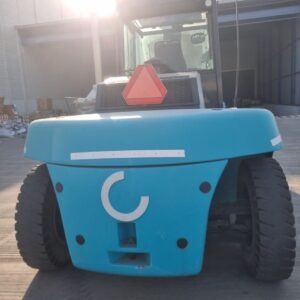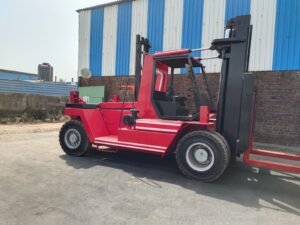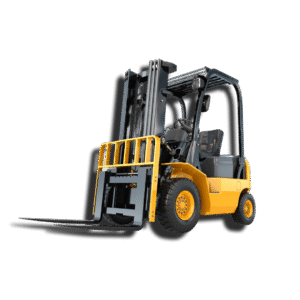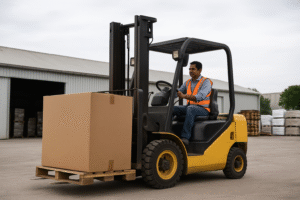When you operate a forklift you are taking responsibility for machinery that has the potential to cause accidents, injury or even death if it is not maintained correctly and kept in a serviceable condition.
There are pre-operational and operational checks you can do before and after starting the forklift; that will only take a few minutes to ensure your safety, the safety of the people around you and the safety of your forklift.
Before Starting The Forklift
Before operating any forklift it is necessary to perform pre-operational checks to identify damage, prevent accidents and to ensure the forklift is safe to use. You might have multiple employees using a single forklift within your workplace, so it is important that you familiarise yourself with the new forklift or just ensure the forklift is up to scratch since the last use.
Visual checks:
- Tyres (check for wear, splitting and pressures)
- Condition of the lights and lenses
- Condition of the gauges
- Obvious signs of damage to the body and overhead guards
- Obvious signs of damage to the mast, lifting assembly and attachments
- Hydraulic hoses, cylinders for leaks or damage
- Look underneath the forklift for fuel or oil leaks
Physical checks:
- (In case of LPG Forklifts) LPG bottle for leaks and security
- Battery connections
- Security of the fitting of attachments
- Brackets on which LPG cylinder is mounted
- Any loose bolts
Check of liquid Levels:
- Hydraulic fluid
- Brake fluid
- Engine oil coolant
- Battery
- Fuel
- Transmission oil levels
Some important points you need to take extra care with are:
- Do not over load with material (safe working load)
- Keep in mind load centre
- Mast full height (MFH)
After Starting the Forklift
Once you have completed the initial check (Before Starting the Forklift) you’re not done just yet. It’s extremely important to go through a few safety tests when initially starting your forklift, as you would rather find out the faults and problems prior putting the forklift to use.
Ensure you check the:
- Hand brake
- Transmission – forward and reverse positive movement
- Brakes and inching pedal
- Full range of steering movement
- Lift control, tilt control and side shift if fitted
- Additional devices fitted
- Horn, flashing lights, headlamps, indicator, reversing lights and beeper
Safety should always be your number one priority within the workplace.
By,
Hussain Khan ( Business Head)
Bharat Lifter





